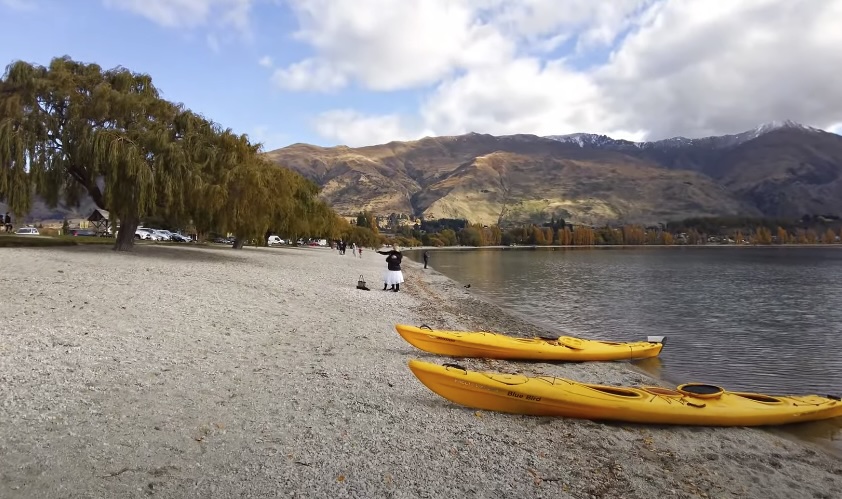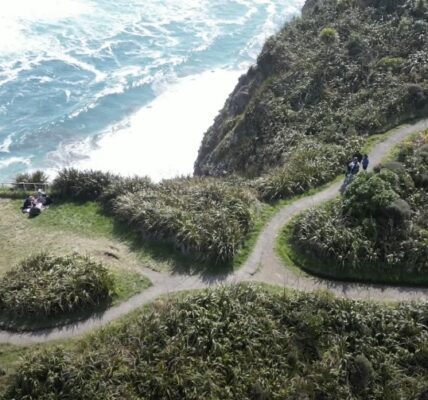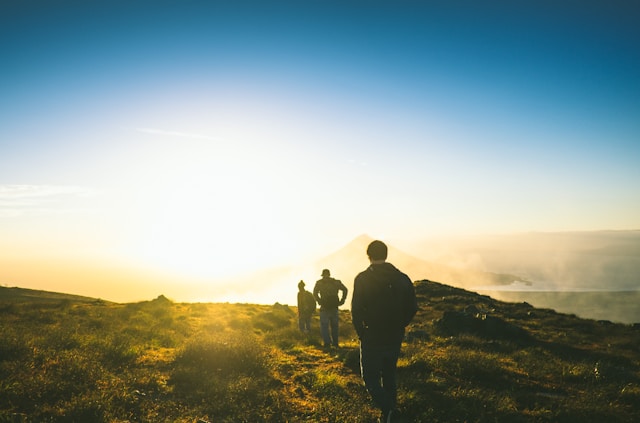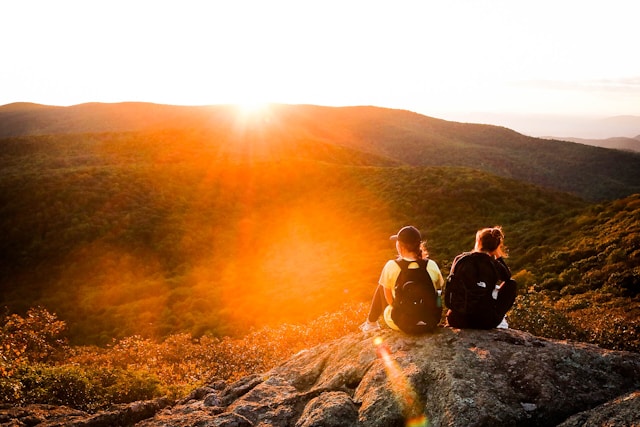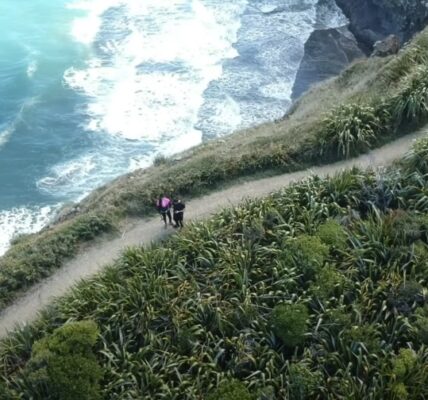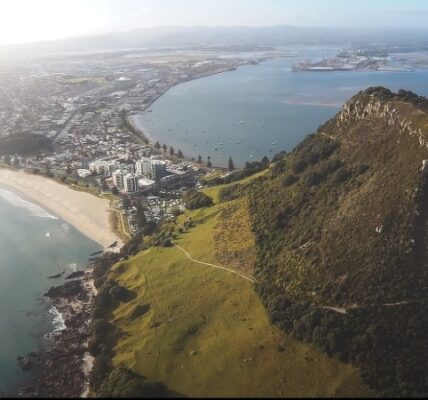Nestled on the shores of its namesake lake, Wanaka is a haven for outdoor enthusiasts, offering some of the most scenic and exhilarating walking trails in New Zealand. Whether you’re a seasoned hiker or a casual stroller, Wanaka’s diverse landscapes provide a perfect backdrop for exploration on foot. This article takes you through the best walks around Wanaka, highlighting why this region is a must-visit for anyone eager to experience the great outdoors.
Introduction to Wanaka’s Walking and Hiking Trails
Nestled within the picturesque landscapes of New Zealand’s South Island, Wanaka stands out as a haven for outdoor enthusiasts. Boasting an array of walking and hiking trails, this region beckons adventurers of all levels to explore its diverse terrain. From tranquil lakeshores to rugged mountain ridges, Wanaka’s trails promise captivating scenery and encounters with native wildlife. This guide offers an overview of the key features of Wanaka’s walking and hiking trails, highlighting their accessibility, diversity, and natural wonders.
Diverse Scenery
Wanaka’s allure lies in its remarkable diversity of landscapes, each offering a unique and awe-inspiring backdrop for outdoor pursuits.
- Lake Wanaka: The crown jewel of the region, Lake Wanaka’s pristine waters reflect the surrounding peaks, creating a stunning panorama that mesmerizes visitors. Whether walking along its shores or admiring it from a viewpoint, the lake’s beauty is unparalleled.
- Southern Alps: To the west of Wanaka, the rugged peaks of the Southern Alps dominate the horizon, offering a dramatic contrast to the tranquil lakeside setting. These majestic mountains provide a challenging playground for experienced hikers, with trails leading to lofty summits and alpine vistas.
- Valleys and Forests: Inland from the lake, lush valleys, and native forests provide a verdant playground for hikers, with trails winding through ancient beech forests and fern-filled gullies. These secluded pathways offer a sense of tranquility and immersion in nature, away from the hustle and bustle of city life.
Range of Trails
One of Wanaka’s greatest appeals is its extensive network of walking and hiking trails, catering to individuals of all fitness levels and interests.
- Leisurely Strolls: For those seeking a more relaxed experience, easy lakeside strolls offer the perfect opportunity to soak in the scenery at a leisurely pace. These flat, well-maintained paths are suitable for families and individuals of all ages, providing opportunities for picnics and wildlife spotting along the way.
- Moderate Hikes: Intermediate trails, such as those ascending to viewpoints overlooking the lake or meandering through rolling hills, provide a moderate challenge without requiring advanced hiking skills. These hikes offer a balance of effort and reward, allowing hikers to explore the region’s beauty at a comfortable pace.
- Challenging Treks: Experienced hikers can test their mettle on demanding treks that lead to lofty summits or traverse rugged terrain, rewarding their efforts with unparalleled panoramic vistas. These challenging trails require careful preparation and a good level of fitness, but the sense of achievement upon reaching the summit is unmatched.
Accessibility
Conveniently located just a short distance from Wanaka’s town center, many of the region’s best walks are easily accessible by car or public transportation.
- Proximity to Town: Several trails begin within walking distance of Wanaka’s central business district, allowing visitors to embark on their outdoor adventures without the need for lengthy travel. This accessibility makes Wanaka an ideal destination for day trips and weekend getaways alike.
- Well-Maintained Tracks: The trails around Wanaka are typically well-marked and maintained, ensuring a safe and enjoyable experience for hikers of all ages. Signage provides clear directions and information about points of interest along the way, enhancing the overall hiking experience.
- Transport Options: For those without access to a vehicle, shuttle services and guided tours are available to transport visitors to trailheads and provide additional support and guidance. These services allow individuals to explore Wanaka’s trails with ease, regardless of their mode of transportation.
Wildlife and Flora
Beyond its breathtaking scenery, Wanaka’s walking and hiking trails offer opportunities for wildlife encounters and appreciation of the region’s unique flora.
- Native Birdlife: Keep an eye out for native bird species such as tūī, bellbirds, and fantails flitting among the trees, their melodious calls adding to the ambiance of the forest. Birdwatchers will delight in the opportunity to observe these beautiful creatures in their natural habitat.
- Unique Plant Species: Wanaka’s diverse ecosystems are home to a variety of unique plant species, including towering beech trees, vibrant alpine flowers, and delicate ferns, providing a rich tapestry of color and texture. Botany enthusiasts will marvel at the intricacies of these plants and their adaptations to the local environment.
Highlighting the Best Walks Around Wanaka
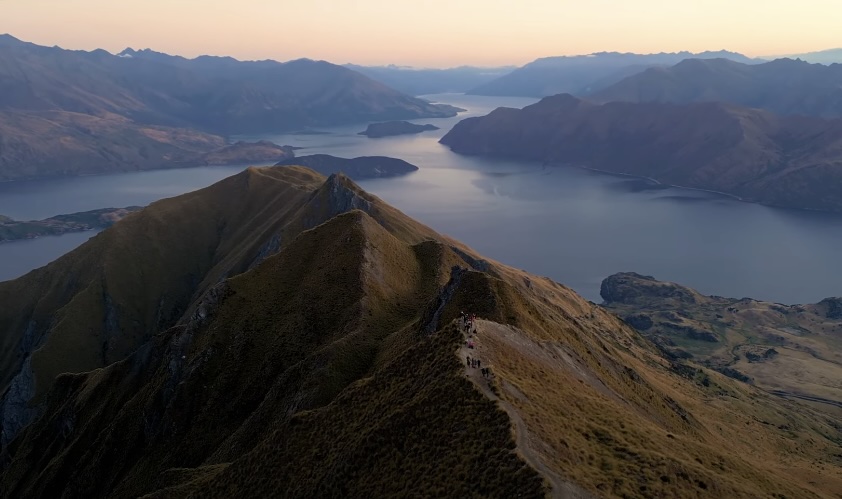
To help you plan your trip, here’s a detailed guide to some of the best walks around Wanaka, complete with trail lengths, difficulty levels, and what to expect.
| Trail Name | Trail Length | Difficulty | Duration | Highlights |
| Roys Peak Track | 16 km return | Challenging | 5-7 hours | Panoramic views over Lake Wanaka, Mount Aspiring/Tititea, and surrounding peaks |
| Mount Iron Loop | 4.5 km loop | Moderate | 1-1.5 hours | 360-degree views of the Wanaka basin and access to a great viewpoint that dominates the area |
| Diamond Lake and Rocky Mountain | 7 km loop | Moderate to challenging | 3-4 hours | Diverse scenery including lake views and a series of viewpoints |
| Lake Wanaka Outlet Track | 12 km one way | Easy | 3-4 hours | Follows the Clutha River and Lake Wanaka, ideal for bird watching and photography |
| Glendhu Bay Track | 15 km one way | Easy to moderate | 4-5 hours | Scenic lakeside trail, connects to more extensive network of tracks |
| Rob Roy Glacier Track | 10 km return | Moderate | 3-4 hours | Dramatic views of the Rob Roy Glacier, waterfalls, and alpine scenery |
Practical Tips for Hiking in Wanaka
Before embarking on any of the best walks around Wanaka, it’s essential to consider these practical tips to enhance your experience and ensure safety. Wanaka’s diverse terrain and ever-changing weather patterns require careful preparation and respect for the environment to ensure a safe and enjoyable hiking adventure.
Weather Considerations
Weather in Wanaka can be unpredictable, with conditions changing rapidly, especially in mountainous areas. It’s crucial to check the forecast before heading out and to be prepared for any changes in weather.
- Check the Forecast: Utilize reliable weather forecasting sources such as the MetService or local visitor centers to stay updated on current conditions and any impending weather changes. Pay attention to factors like temperature, precipitation, wind speed, and visibility.
- Layer Clothing: Dressing in layers allows you to adapt to temperature fluctuations throughout the day. Start with a moisture-wicking base layer to keep sweat away from your skin, add an insulating mid-layer for warmth, and top it off with a waterproof and windproof outer layer to protect against rain and wind chill. Don’t forget to pack a hat and gloves for added warmth, especially in cooler weather or at higher elevations.
- Pack Essentials: Always carry essential items to ensure your safety and comfort on the trail. These may include a waterproof jacket, extra clothing, a hat, gloves, and a lightweight emergency shelter or space blanket in case of unexpected weather events such as sudden storms or temperature drops. Additionally, pack plenty of water to stay hydrated throughout your hike, as well as nutritious snacks such as trail mix, energy bars, and fruit to maintain your energy levels.
Gear and Preparation
Proper gear and preparation are essential for a safe and enjoyable hiking experience in Wanaka’s rugged terrain.
| Topic | Tips |
| Footwear | Choose sturdy, comfortable hiking boots with good ankle support and traction to navigate varied terrain safely. Avoid wearing new shoes on long hikes to prevent blisters and discomfort. Consider investing in waterproof boots to keep your feet dry when crossing streams or hiking in wet conditions. |
| Hydration and Nutrition | Proper hydration and nutrition are key to sustaining energy levels and preventing fatigue on the trail. Carry an adequate supply of water to stay hydrated throughout your hike, especially in warmer weather or at higher altitudes where dehydration can occur more rapidly. Pack nutritious snacks such as trail mix, energy bars, and fruit to fuel your adventure and replenish electrolytes lost through sweating. |
| Sun Protection | Protect your skin from harmful UV rays by wearing sunscreen with a high SPF rating, sunglasses with UV protection, and a wide-brimmed hat to shade your face and neck. Reapply sunscreen regularly, especially if sweating or swimming, and seek shade during the hottest part of the day to avoid sunburn and heat-related illnesses. |
| Navigation | Bring a detailed map of the area and a compass or GPS device to help navigate trails and ensure you stay on course. Familiarize yourself with trail markers and signage before setting out, and be prepared to adjust your route if necessary due to trail closures, weather conditions, or other unforeseen circumstances. Consider downloading offline maps or trail apps to your smartphone for additional navigation assistance in areas with limited cell service. |
Respect the Environment
Maintaining respect for the natural environment is essential to preserve Wanaka’s pristine wilderness for future generations.
- Stay on Marked Paths: Stick to designated trails to minimize erosion and disturbance to fragile ecosystems. Avoid creating new paths or shortcuts, which can harm native vegetation and disturb wildlife habitats. Respect any trail closures or restrictions in place to protect sensitive areas or wildlife habitats.
- Leave No Trace: Practice Leave No Trace principles by carrying out all trash, including food wrappers, tissues, and other waste. Dispose of waste properly in designated bins or pack it out with you to dispose of responsibly. Leave natural and cultural artifacts undisturbed for others to enjoy, and avoid picking flowers or disturbing rocks, plants, or animals.
- Respect Wildlife: Observe wildlife from a safe distance and avoid feeding or approaching animals, as this can disrupt their natural behavior and potentially lead to dangerous encounters. Keep pets under control at all times to prevent them from chasing or harassing wildlife or spreading diseases. Be mindful of nesting birds and other vulnerable species, especially during breeding seasons, and avoid disturbing their habitats or nesting sites.
Conclusion
Whether you’re looking for a vigorous trek or a peaceful walk, Wanaka’s trails provide a remarkable opportunity to connect with nature. The best walks around Wanaka cater to all desires, showcasing the raw beauty of New Zealand’s landscapes. So lace up your boots, pack your camera, and prepare for an unforgettable adventure in the great outdoors.
FAQ
A1: Spring (September to November) and autumn (March to May) offer mild weather and less crowded trails, making them ideal for hiking.
A2: Yes, both the Lake Wanaka Outlet Track and the Glendhu Bay Track are suitable for families and offer easy terrain.
A3: Most walks do not require a permit; however, always check local regulations as conditions may change.
A4: Keep a safe distance, do not feed the animals, and avoid sudden movements that might startle them.
